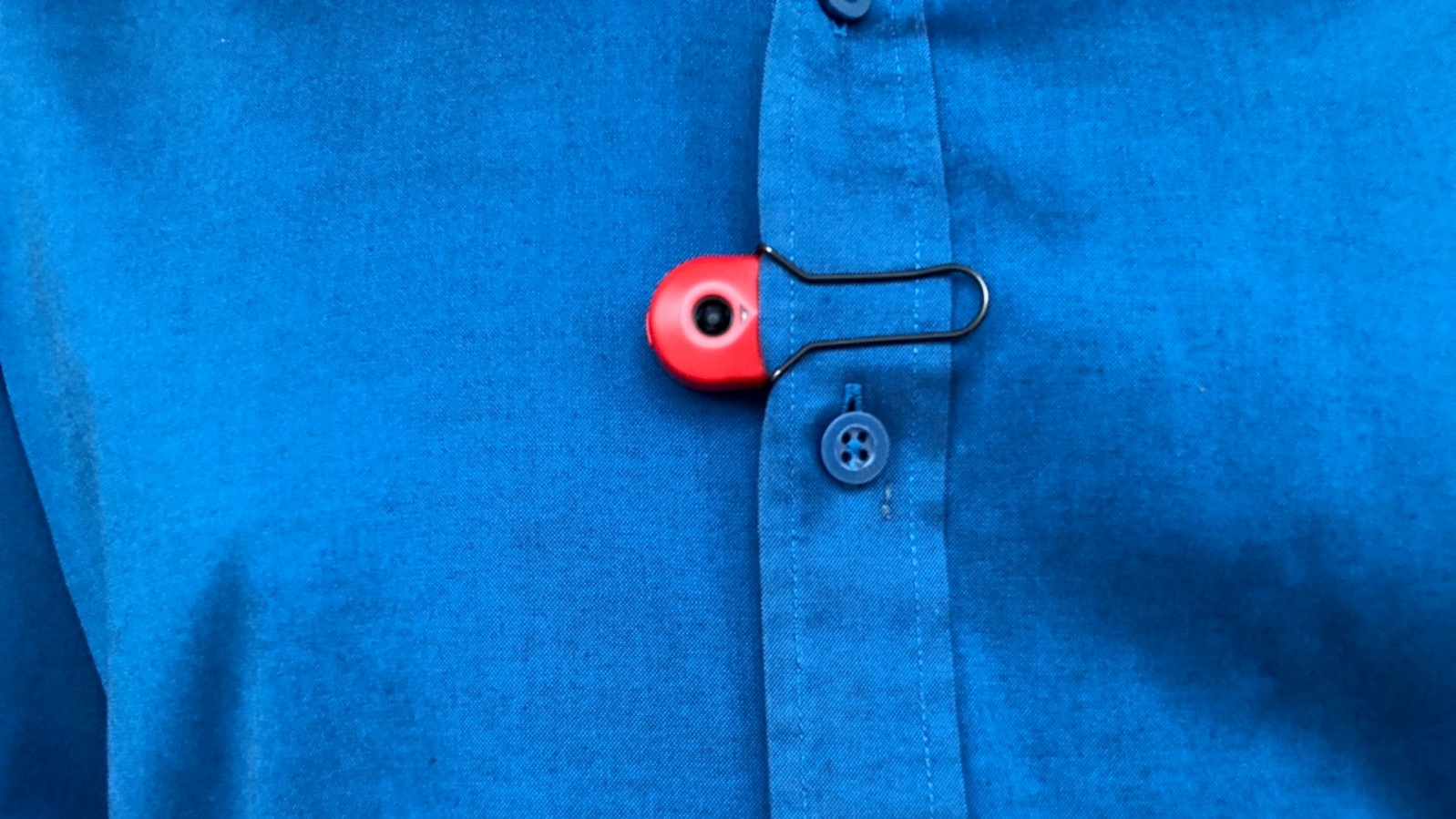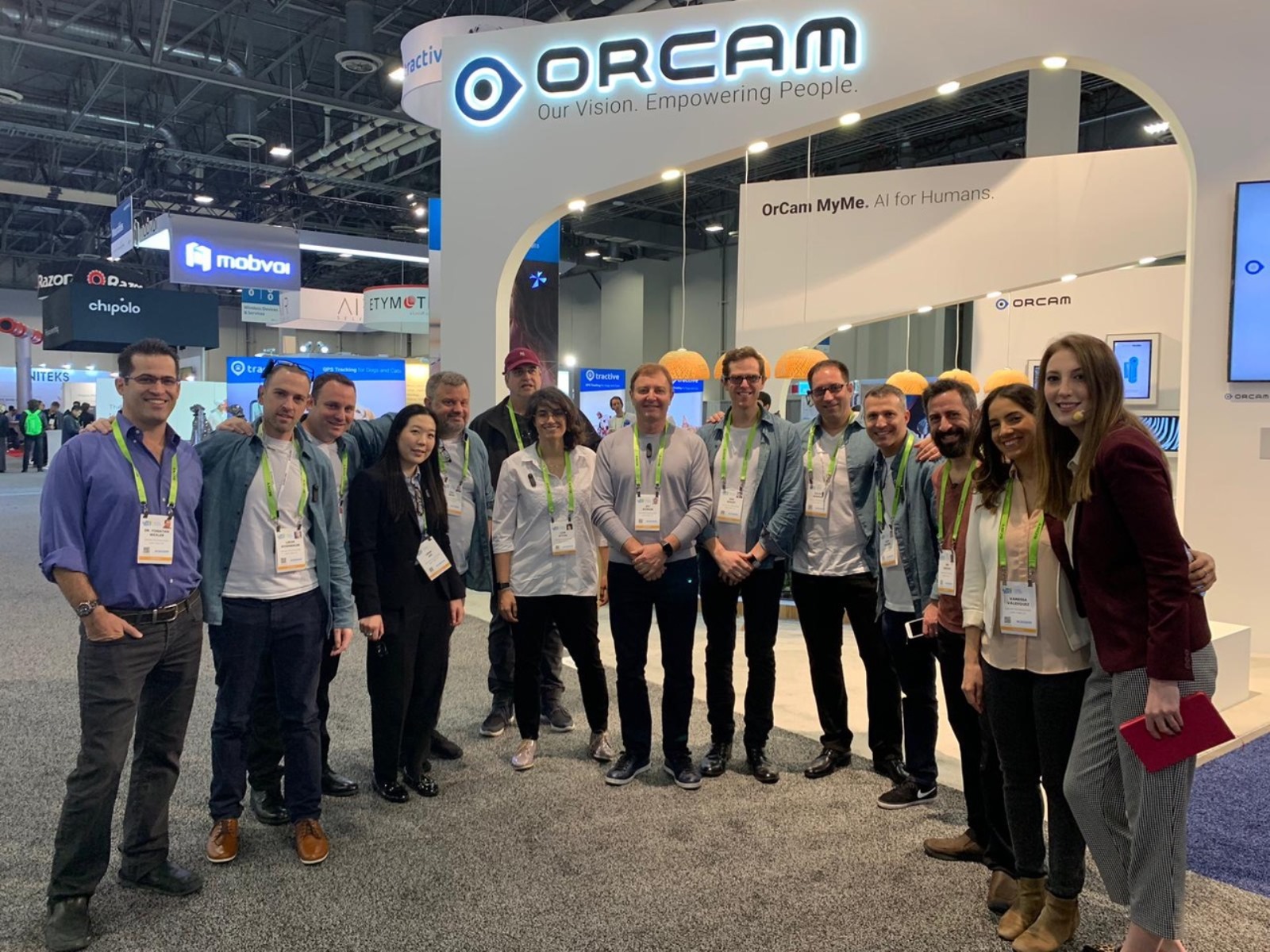While Jerusalem startup Mobileye was turning heads with its collision-avoidance and autonomous-driving technology and negotiating with Intel for what would result in a $15.3 billion acquisition in 2017, founders Amnon Shashua and Ziv Aviram have been giving increasing attention to OrCam – their smaller do-good-in-the-world startup.
The first result of that little project was a very big deal for its target audience: blind and visually-impaired individuals.
Released in 2015, OrCam’s MyEye and MyReader finger-sized devices clip onto a pair of glasses and speak whatever the user points at through a tiny speaker. MyEye can “read” the words of a book, a newspaper or a billboard in 23 languages. MyEye can also identify objects, such as cash (is that $10 or $100?), items on a supermarket shelf or loved ones.
It’s the latter capability from which OrCam’s latest device, MyMe, drew its inspiration.
It turns out that developing hardware and software for the disabled wasn’t the main meal for OrCam, but rather just the first course.
“OrCam specializes in building wearable technologies,” EVP of R&D Yonatan Wexler tells ISRAEL21c. “The first device we built was for blind people. Our second device leverages the technology to help people throughout their daily lives.”
The thumb-sized MyMe magnetically clips onto a shirt or hangs on a dress like a pendant. Its “eye” (a 13-megapixel camera) is always recording people you encounter, whether at a party, business meeting or on the street. Its battery lasts a full day on a charge.
If MyMe’s facial-recognition technology can match the face it sees with images from the wearer’s Facebook or contact list, it will display that data on a paired device such as a smartphone or Apple Watch.

Who was that, again?
Get Wexler started about the uses of MyMe, and he can excitedly name a half dozen prominent examples. If you’re at a party and you can’t remember someone’s name – and you’re sure you’ve met before – MyMe can help.
“Nowadays we meet way more people than our brains can hold at any one time,” Wexler says.
Once MyMe has an entry for a friend or colleague, you can annotate it on your mobile: “John Smith, rock climber, from Seattle, married to Gwen.” And it will display a contact’s latest tweets or status updates.
That’s even more important in the world of business, Wexler says, whether you’ve just started a new job or you’re at a conference. (“So how was your trip to Cancun last weekend?”)
MyMe will even let you scan a business card or name tag by holding it up to the MyMe’s “eye” for a moment. Later, you can match pictures to card scans.
“It offloads the process of remembering and note-taking,” Wexler says, “freeing us for the things we excel at.”
I tried it out. As I spoke to an OrCam employee, his MyMe checked to see if it knew me. No dice – we weren’t Facebook friends yet. Once I was added to his friend list, MyMe correctly identified me. In another meeting with the same employee, however, MyMe got it wrong.
“The device learns your friends and becomes more accurate over time,” Wexler explains.
Hackers can’t touch this wearable data
OrCam is not the only company with facial-recognition hardware and software, of course. All of Apple’s latest iPhones can be unlocked by analyzing a user’s face. Facebook and Google are masters at identifying people in pictures.
OrCam’s achievement is shrinking all the processing power so that the recognition is done on the half-ounce MyMe device, not in the cloud. Because MyMe doesn’t store photos, Wexler says,this wearable data is not vulnerable to hackers.
MyMe’s success depends to a certain extent on people trusting that OrCam will not share any of the data it collects on the device with third parties.
“We were expecting there to be more concerns about privacy,” Wexler says, referring to MyMe’s prominence at this year’s CES show in Las Vegas. “But people seemed more interested in how they could get a MyMe than the privacy issue.”

Shipping soon
Can MyMe identify the “important” people you’d like to approach at a trade show by doing a quick scan of the room?
No, Wexler says. “We’re not building a spy camera, trying to hide what it does.”
Shashua describes MyMe as a kind of “FitBit for social.”
The device shows you a chart of all the people you interacted with over the past week, and then you can see whether your work-life balance needs any adjusting.
“Our memories tend to recall anecdotes,”Wexler says. “Now you have full statistics.”
The first iteration of MyMe requires users to look at their phone or watch to get the identification info, but a future version will speak the data into your Bluetooth-connected headphones, much as MyEye speaks what it reads.
Another planned feature: You’ll be able to prompt MyMe to record the audio from interactions you have with people.
First announced nearly two years ago, MyMe is now poised to ship in mid-2019. The price hasn’t been finalized, but the 877 early adopters who ordered MyMe through a modest Kickstarter campaign — aimed mainly at bringing the wearable to their attention – each paid only $199.
Is there anything about MyMe that’s uniquely Israeli or Jewish? we wondered. “People in Israel really like the social aspects,” Wexler muses. “We know the power of working together and close social ties. And Israelis don’t always know where they end and their environment begins!”














